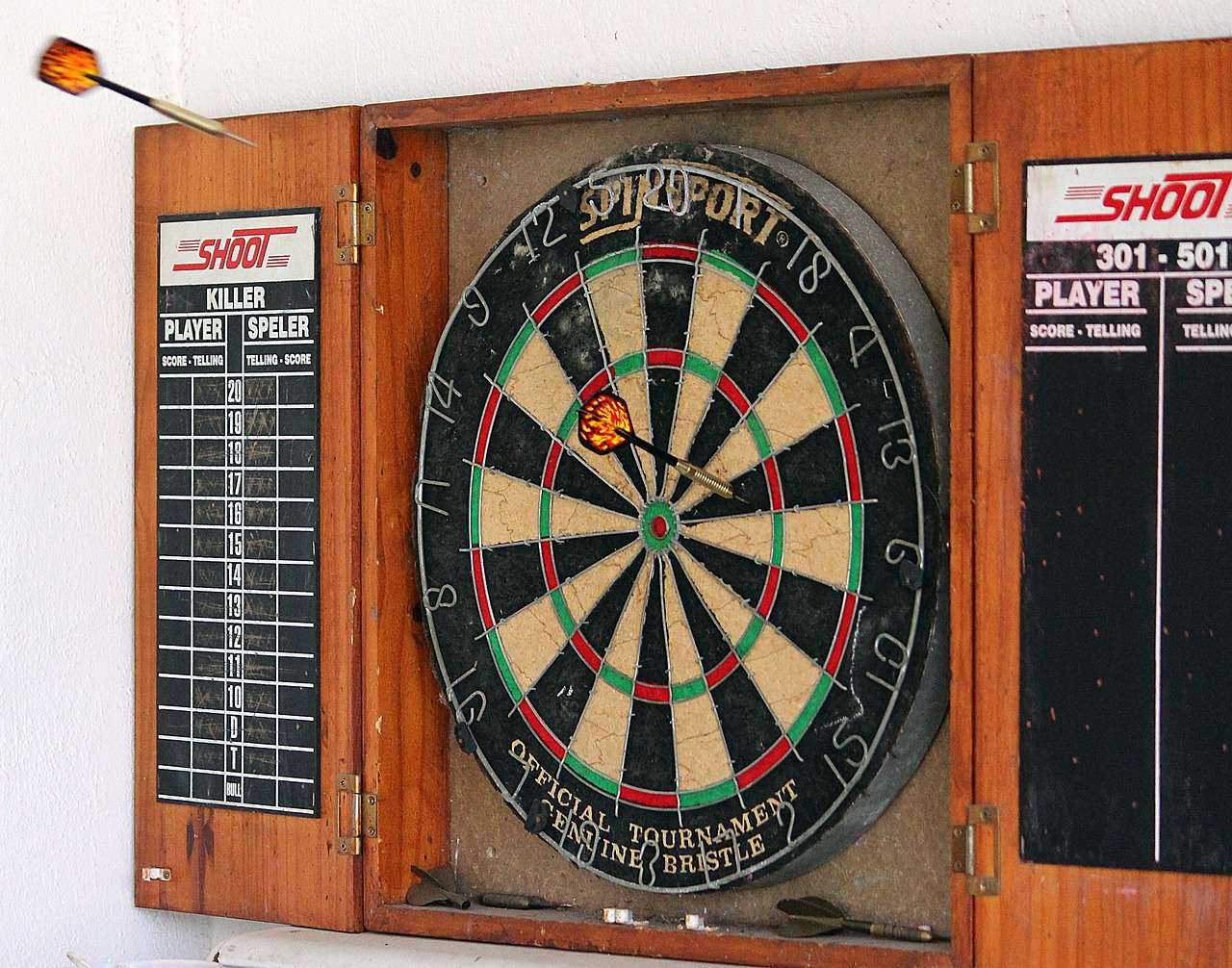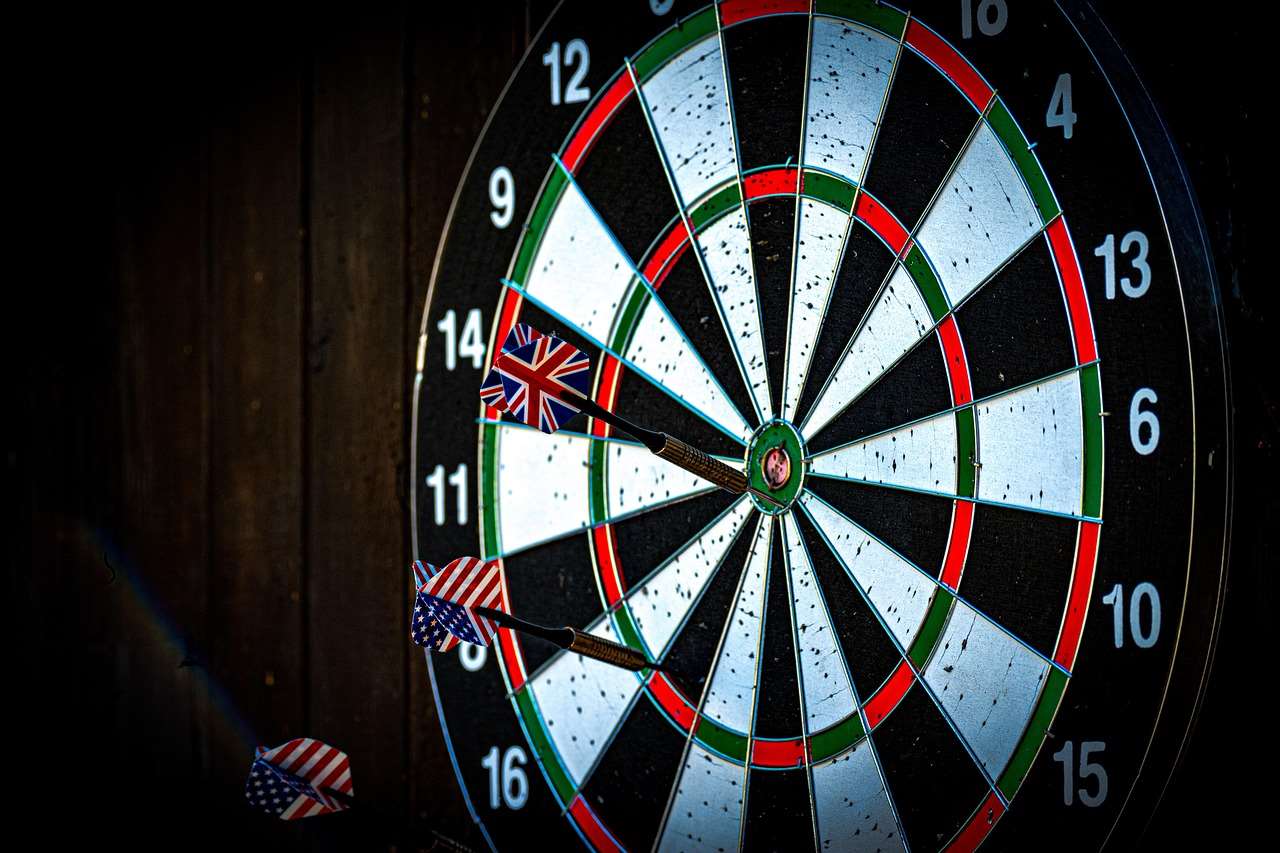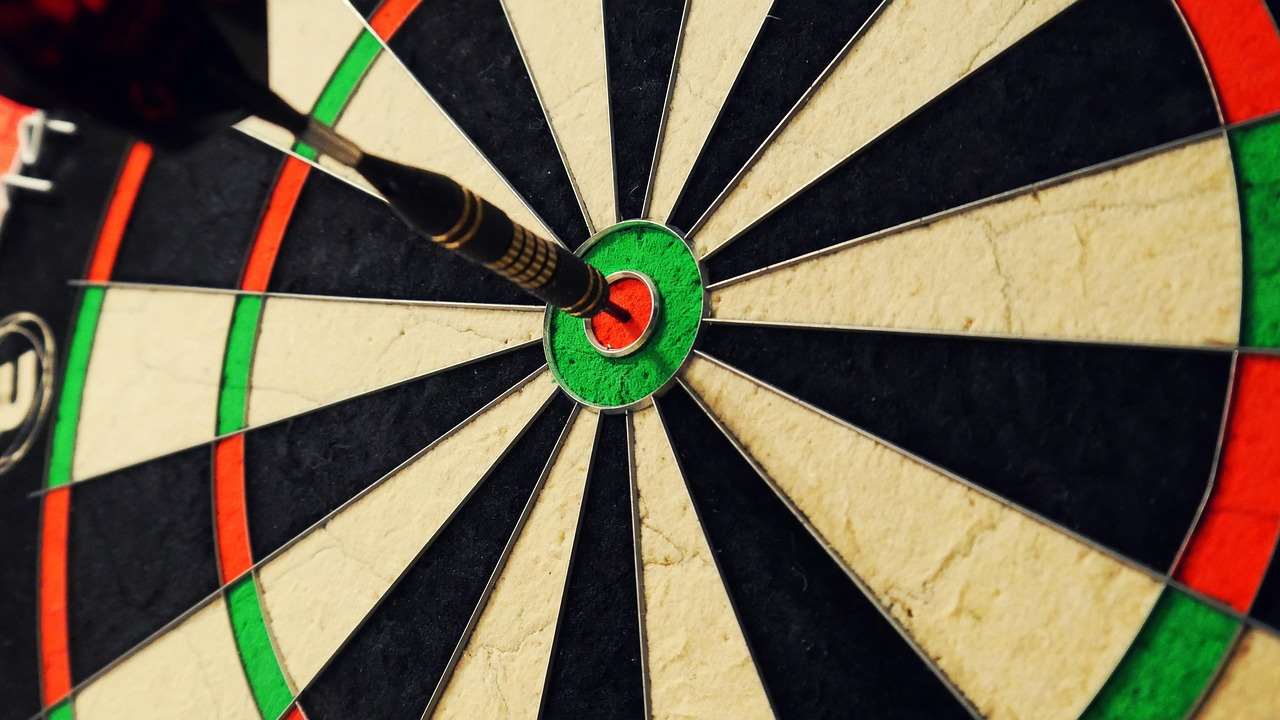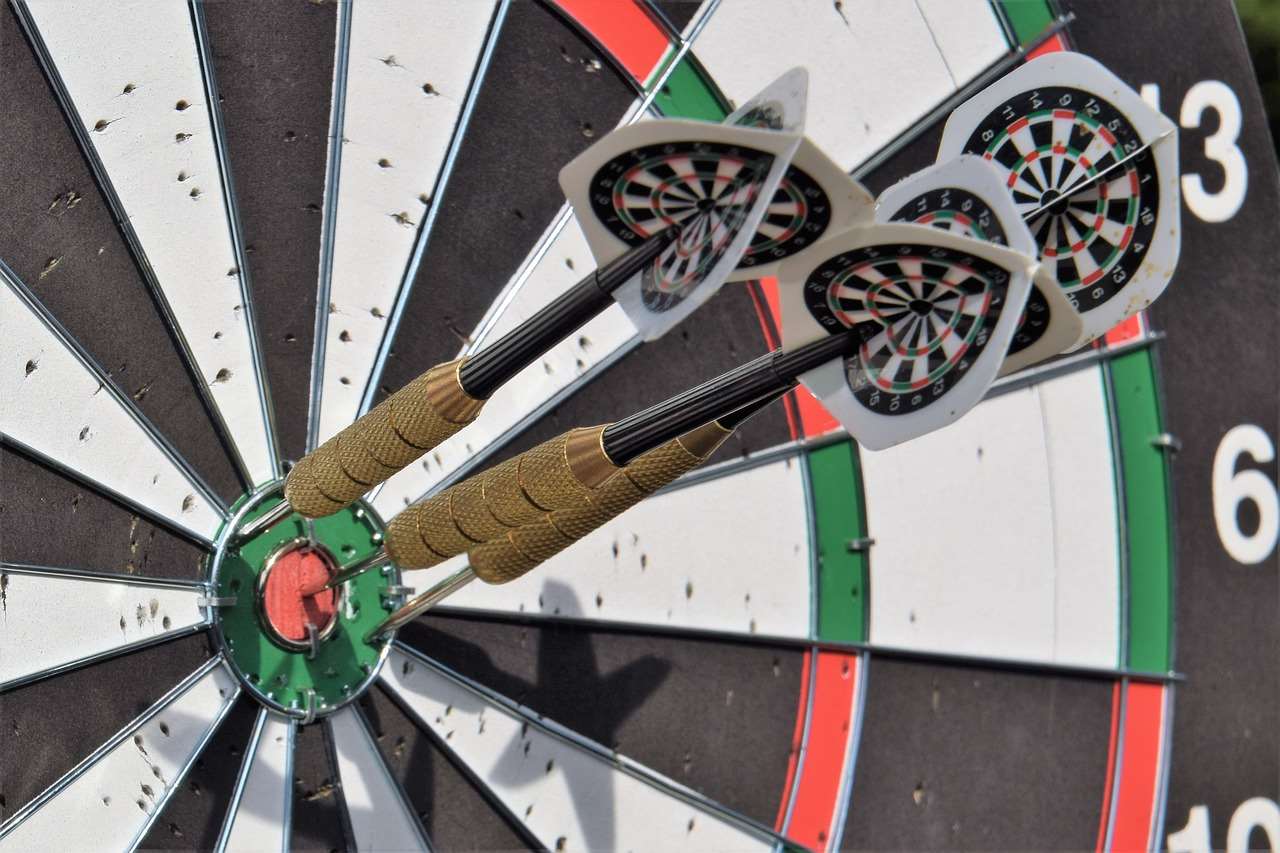Understanding the nuances between materials like tungsten, brass, nickel silver, and other metals is crucial for various applications, especially in determining the right dart material. This Tungsten Brass Nickel Silver Full Comparison will provide a comprehensive overview of their properties, uses, and suitability for different needs, helping you make an informed decision.
⚠️ Still Using Pen & Paper (or a Chalkboard)?! ⚠️
Step into the future! The Dart Counter App handles all the scoring, suggests checkouts, and tracks your stats automatically. It's easier than you think!
Try the Smart Dart Counter App FREE!Ready for an upgrade? Click above!
Understanding Material Properties: A Key to the Tungsten Brass Nickel Silver Full Comparison
Before diving into specific applications, it’s important to understand the fundamental properties that differentiate tungsten, brass, and nickel silver. These properties include density, hardness, corrosion resistance, cost, and machinability. Each material excels in certain areas, making it better suited for particular uses.
Density and Weight
Density refers to the mass per unit volume. Tungsten is incredibly dense, significantly more so than brass or nickel silver. This high density allows for smaller, heavier objects, which is a key advantage in applications like dart barrels where a compact design is desired. Brass is moderately dense, while nickel silver falls somewhere between brass and tungsten, but still significantly less dense than pure tungsten.
Hardness and Durability
Hardness measures a material’s resistance to localized plastic deformation, such as scratching or indentation. Tungsten alloys, particularly those used in darts, are exceptionally hard, making them resistant to wear and tear. Brass is softer and more prone to scratches. Nickel silver offers better hardness than brass but is still not as durable as tungsten.
Corrosion Resistance
Corrosion resistance is crucial for maintaining the integrity and appearance of a material over time. Brass and nickel silver both exhibit good corrosion resistance, particularly to atmospheric corrosion. Tungsten itself is highly corrosion-resistant, but the binders used in tungsten alloys can sometimes affect its overall corrosion resistance. Proper plating and surface treatments can mitigate this.
Cost Considerations
Cost is a significant factor in material selection. Tungsten is generally the most expensive of the three, due to its scarcity and the complex manufacturing processes required to work with it. Brass is typically the least expensive, while nickel silver falls in the middle. Therefore, if budget is your primary concern, then Cheap Dart Materials Buying Guide provides an excellent introduction.
Machinability and Manufacturing
Machinability refers to how easily a material can be cut, shaped, and finished. Brass is known for its excellent machinability, making it easy to manufacture into complex shapes. Nickel silver is also relatively easy to machine, though not quite as effortless as brass. Tungsten, due to its hardness, is more challenging to machine and requires specialized equipment and techniques, contributing to its higher cost. For beginners, exploring Beginner Dart Barrel Materials Guide provides helpful insights into material choice.

Applications Across Industries: Where Do They Shine?
The unique properties of tungsten, brass, and nickel silver make them suitable for a wide range of applications. Let’s explore some common uses for each material.
Tungsten: Heavy-Duty Applications
Tungsten’s high density and hardness make it ideal for applications requiring strength and wear resistance. Some common applications include:
- Darts: Tungsten darts are popular among serious players due to their slim profile and high density, allowing for tighter groupings. The benefits of this material are clear when reviewing the Tungsten Darts Pros Cons Explained.
- Welding Electrodes: Tungsten electrodes are used in TIG (Gas Tungsten Arc Welding) due to their high melting point and ability to withstand high temperatures.
- Military Applications: Tungsten is used in armor-piercing projectiles and other military applications due to its density and hardness.
- Jewelry: Tungsten carbide is used to make durable and scratch-resistant rings and other jewelry items.
When evaluating, it’s also worth understanding Tungsten Percentage Explained Darts.
Brass: Versatile and Cost-Effective
Brass, an alloy of copper and zinc, is known for its versatility, machinability, and relatively low cost. Common applications include:
- Plumbing Fittings: Brass’s corrosion resistance and machinability make it a popular choice for plumbing fittings and valves.
- Musical Instruments: Brass is used in a wide range of musical instruments, including trumpets, trombones, and saxophones, due to its acoustic properties.
- Ammunition Casings: Brass is used in ammunition casings due to its malleability and ability to withstand high pressures.
- Decorative Items: Brass’s golden color and ease of machining make it suitable for decorative items, such as door knobs and handles.
Nickel Silver: Aesthetic Appeal and Functional Properties
Nickel silver, also known as German silver or alpacca, is an alloy of copper, nickel, and zinc. Despite its name, it contains no silver. It is valued for its appearance, corrosion resistance, and moderate strength. Common applications include:
- Tableware: Nickel silver is used in silverware and other tableware items due to its appearance and corrosion resistance.
- Musical Instruments: Nickel silver is used in musical instrument components, such as valve slides and keywork, due to its durability and resistance to tarnishing.
- Jewelry: Nickel silver is used as a base metal in jewelry, often plated with silver or other precious metals.
- Keys: Many keys are made from nickel silver because of its durability and resistance to wear. You can get Nickel Silver Darts Full Info on our website.

Darts: A Deeper Dive into Material Selection
The choice of material is particularly important when it comes to darts. The material affects the dart’s weight, balance, and overall performance. This section of our Tungsten Brass Nickel Silver Full Comparison will focus specifically on darts.
Tungsten Darts: The Professional’s Choice
Tungsten darts are favored by professional dart players and serious enthusiasts. Their high density allows for a slim barrel profile, which enables tighter groupings on the dartboard. This is crucial for consistent scoring. Players often Why Choose High Tungsten Darts for competitive play.
- Advantages: Slim profile, high density, excellent grip options.
- Disadvantages: Higher cost compared to brass or nickel silver darts.
Brass Darts: An Affordable Option
Brass darts are a more budget-friendly option, ideal for beginners or casual players. They are less dense than tungsten darts, resulting in a thicker barrel. While they are more affordable, it is crucial to understand the Brass vs Tungsten Darts Comparison.
- Advantages: Lower cost, readily available.
- Disadvantages: Thicker barrel, less dense, may not provide the same level of precision as tungsten darts.
Nickel Silver Darts: A Middle Ground
Nickel silver darts offer a compromise between the cost of brass and the performance of tungsten. They provide a decent level of density and are more durable than brass.
- Advantages: Moderate cost, decent density, good durability.
- Disadvantages: Not as dense as tungsten, may not offer the same level of performance.

Factors Influencing Material Selection
Several factors influence the selection of tungsten, brass, or nickel silver for a particular application. These factors include:
- Performance Requirements: Does the application require high density, hardness, or corrosion resistance?
- Budget Constraints: What is the allowable budget for materials?
- Manufacturing Considerations: How easily can the material be machined or formed into the desired shape?
- Environmental Conditions: Will the material be exposed to harsh environmental conditions that require specific corrosion resistance?
- Aesthetic Requirements: Does the material need to have a specific color or finish?
Tips for Choosing the Right Material
Here are some practical tips for choosing the right material for your needs:
- Define Your Requirements: Clearly identify the performance, budget, and manufacturing requirements of your application.
- Research Material Properties: Thoroughly research the properties of tungsten, brass, and nickel silver to determine which material best meets your needs.
- Consider Alloys: Explore different alloys of each material to find the optimal combination of properties.
- Consult with Experts: If you are unsure, consult with materials scientists or engineers for guidance.
- Prototype and Test: Create prototypes and test them under real-world conditions to ensure the material performs as expected.

Beyond the Basics: Emerging Trends and Innovations
The field of materials science is constantly evolving, with new alloys and manufacturing techniques being developed all the time. Some emerging trends and innovations related to tungsten, brass, and nickel silver include:
- Advanced Tungsten Alloys: Researchers are developing new tungsten alloys with improved strength, ductility, and machinability.
- 3D Printing of Metal Parts: Additive manufacturing techniques, such as 3D printing, are enabling the creation of complex parts from tungsten, brass, and nickel silver.
- Surface Treatments and Coatings: New surface treatments and coatings are being developed to enhance the corrosion resistance and wear resistance of these materials.
Understanding the ongoing development in these material spaces can help you Choose Right Dart Material Guide for the best solution to your needs.
Conclusion: Making Informed Decisions
This Tungsten Brass Nickel Silver Full Comparison has provided a comprehensive overview of the properties, applications, and selection criteria for these important materials. By understanding the strengths and weaknesses of each material, you can make informed decisions and choose the right material for your specific needs. Whether you are selecting materials for darts, plumbing fittings, musical instruments, or other applications, careful consideration of these factors will ensure optimal performance and value. Choosing the appropriate dart barrel material impacts on performance as the article on Best Material For Darts Barrels clearly explains. Armed with this knowledge, you are now well-equipped to Choose Best Dart Equipment with confidence.

Hi, I’m Dieter, and I created Dartcounter (Dartcounterapp.com). My motivation wasn’t being a darts expert – quite the opposite! When I first started playing, I loved the game but found keeping accurate scores and tracking stats difficult and distracting.
I figured I couldn’t be the only one struggling with this. So, I decided to build a solution: an easy-to-use application that everyone, no matter their experience level, could use to manage scoring effortlessly.
My goal for Dartcounter was simple: let the app handle the numbers – the scoring, the averages, the stats, even checkout suggestions – so players could focus purely on their throw and enjoying the game. It began as a way to solve my own beginner’s problem, and I’m thrilled it has grown into a helpful tool for the wider darts community.